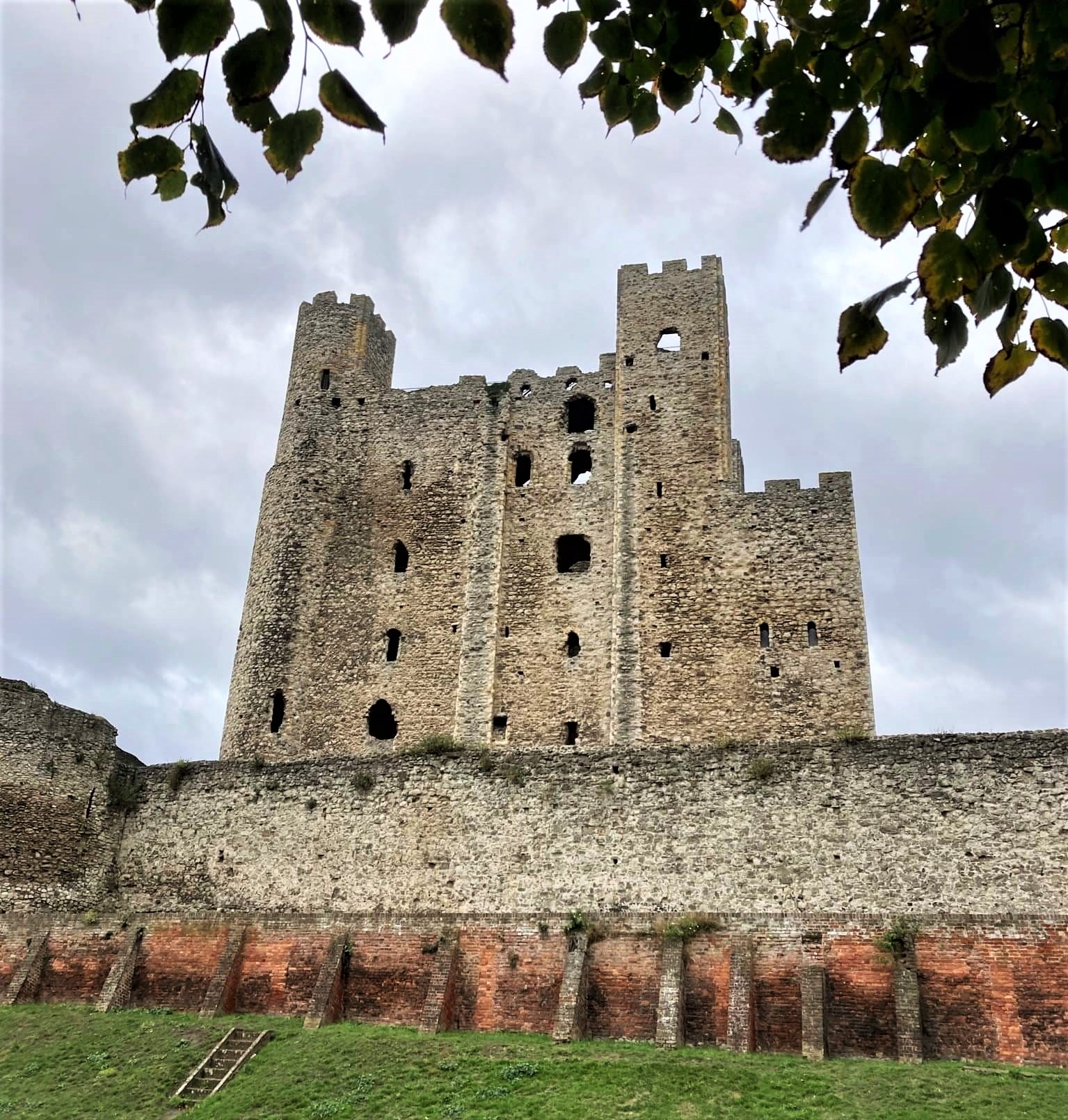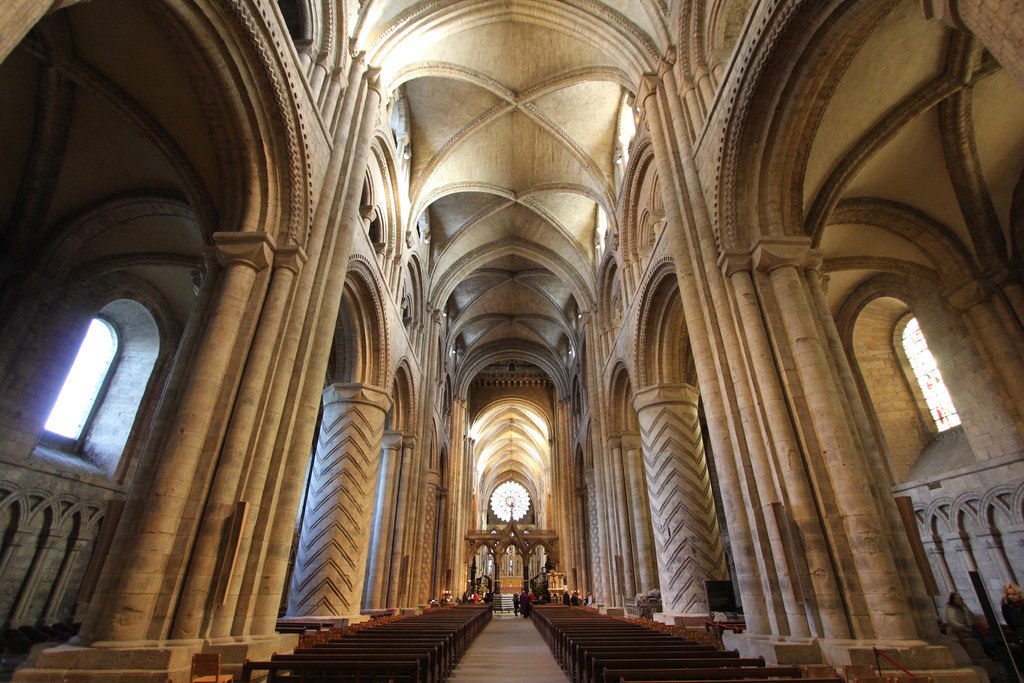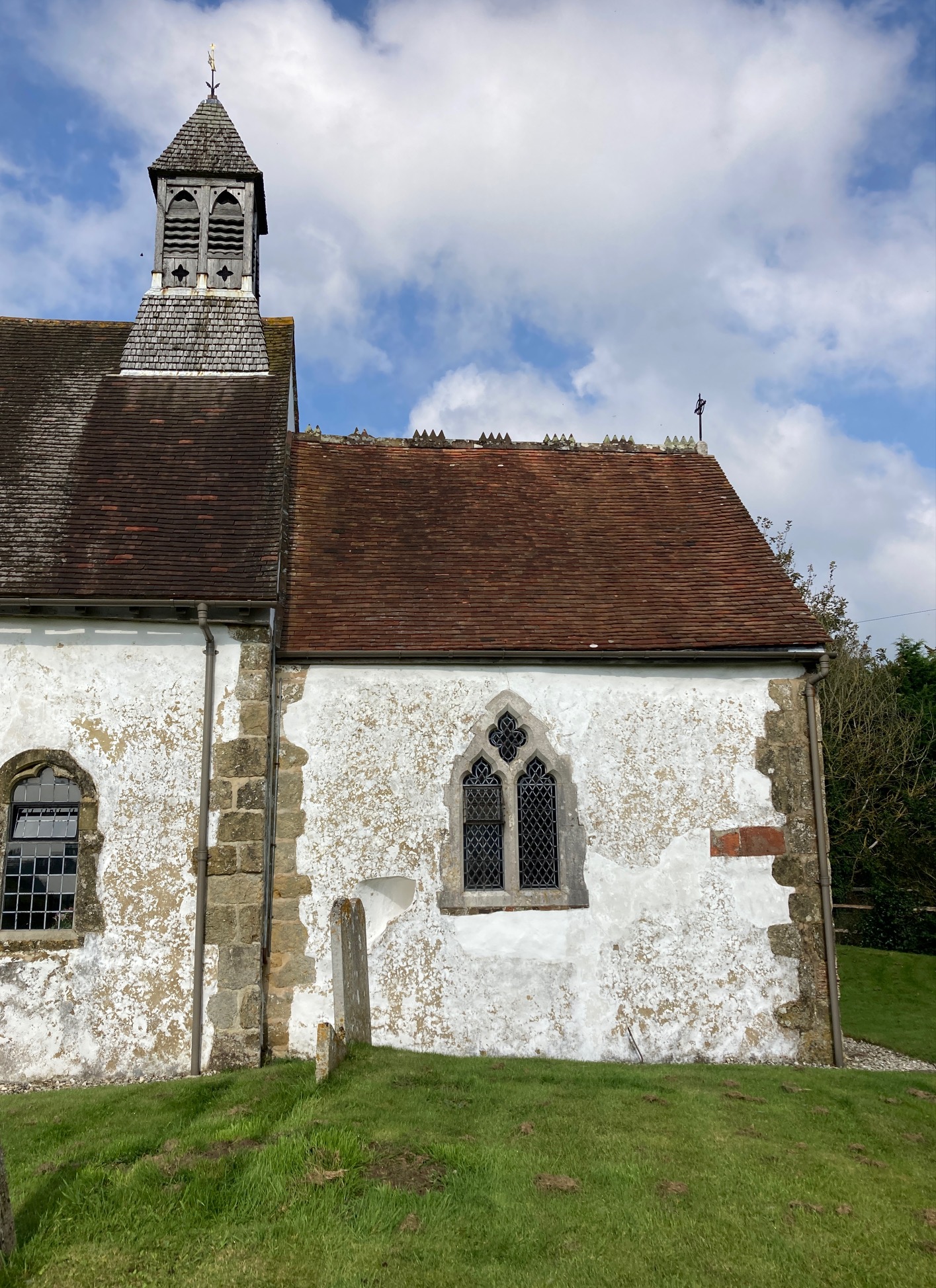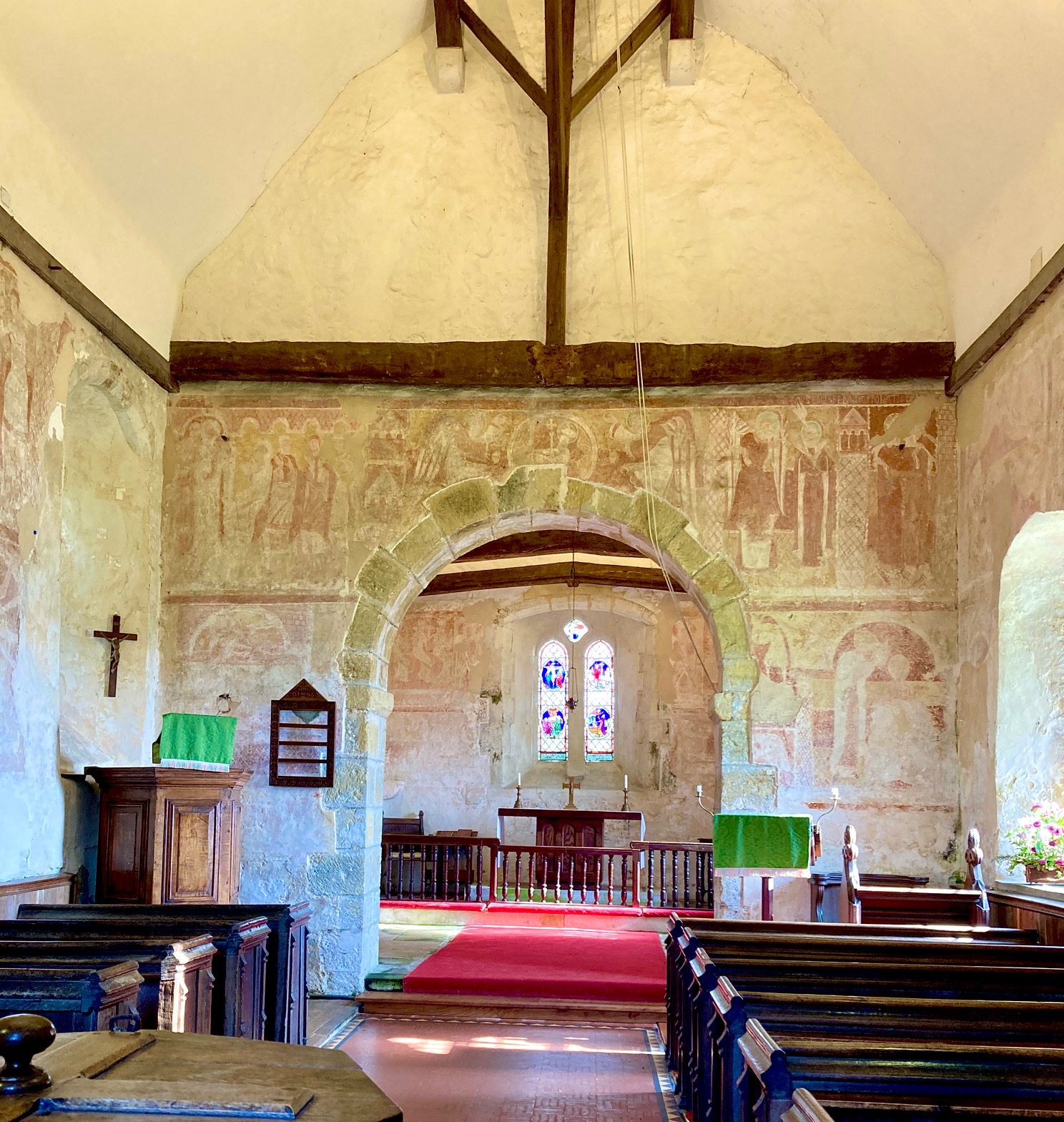Medieval architecture
|
The 12th-century keep of Rochester castle is a well preserved example of Norman architecture. |
Contents |
[edit] Introduction
There are several different terms used to describe the medieval period in history. In Europe, it is often referred to as the Middle Ages and spanned from roughly 500AD (or the fall of the Roman Empire) to 1500AD (the start of the Renaissance).
The early medieval period is considered to be the period between 410 AD and 1066 AD.
[edit] Romanesque
The Early Middle Ages (from 600AD to 800AD) was also referred to as Carolingian (after Charlemagne) or Romanesque. This name came from Charlemagne’s encouragement of the revival of Roman building techniques.
This repurposing incorporated certain changes, including the early substitution of stone with timber, particularly in Northern Europe where timber was readily available and was more commonly used by local tradespeople. Early Northern European Romanesque construction was generally simple, but this would change over time.
[edit] From Romanesque to Norman
In England, Romanesque architecture is sometimes referred to as Norman. This name is generally associated with the 1066 invasion of William the Conqueror, who was originally from the French region of Normandy.
However, some experts recognise an earlier emergence of the Norman style, notably in the Abbey at Westminster that was rebuilt on the site of a Saxon church during the reign of Edward the Confessor (who was king from 1042 to 1066). Prior to becoming king, Edward had spent several years in exile in Normandy, where he witnessed the style that would later be incorporated into the Abbey. This project was consecrated in December 1065, shortly before Edward’s death in January 1066.
[edit] Dominance of the Norman style in England
Edward’s cousin and named successor was William (king from 1066 to 1087), the Duke of Normandy. As a child, William - who was a devout Christian - lived during a monastic revival in Normandy. This included investment in cathedral schools for lay pupils, teaching literature, medicine, commerce, agriculture, music and art. These pupils continued the ecclesiastical and architectural revival in Normandy, which led to the ornamentation of places of worship.
In England, the abbeys, cathedrals and castles of this time were built in the Norman style. Characterised by semicircular arches (known as Norman arches) and massive cylindrical pillars, this fortress-like style might be seen as William the Conqueror’s assertion of authority across his newly conquered kingdom.
Norman stylistic features sometimes included:
- Internal arcade, gallery, clerestory and open timber roof.
- External facade tower (sometimes double towers) and square crossing.
- Massive stone construction (including large piers and giant niches) with simple geometry.
- Rounded doorways and tympanums.
- Geometric or abstract patterns (taken from metalcraft of earlier traditions) and wall paintings for ornamentation rather than large sculptures of figures.
[edit] Norman rib vaulting
One of the most significant developments in Norman architecture occurred in approximately 1050, when improved skills allowed builders to explore the possibilities of more dramatic vaulting across major spans in the construction of Durham Cathedral (with construction starting from 1093). There are indications that this building was planned with a revolutionary support system made up of a combination of rib vaulting and compound piers. This type of rib vaulting is thought to be the earliest of its kind in Europe.
The pier and vault relationship is highly visible and powerfully expressed. The system is executed with emphasis through large, simple pillars ornamented with deeply cut patterns associated with Barbarian tribes. These pillars alternate with compound piers that carry the transverse arches of the vaults.
[edit] Significant Norman cathedrals throughout England
Durham Cathedral is considered one of the most significant and complete Romanesque cathedrals in Europe. Its innovative design paved the way for the structural evolution of Gothic architecture.
During that time, the Norman style dominated, but other cathedrals built during the period began to incorporate other early Gothic elements as well. Some of these cathedrals have survived (such as Ely, Winchester, Chichester, Canterbury, Rochester, Norwich and so on), although many have undergone significant modifications through the centuries.
[edit] Norman wall paintings
Along with the massive cathedrals, many modest parish churches were built in the Norman style during this period. The earliest simple buildings typically consisted of a single large room without an aisle, although some may have been built in the shape of a cross. There may have been a central tower or belfry.
Later Norman churches may have been divided into a designated chancel (where the priest delivered services) and nave (where worshippers stood during services). The walls were often plastered both inside and outside. Some inside walls were decorated with vivid paintings of scenes from the Bible, intended to educate the illiterate worshippers attending services.
|
St Botoph's is an early Norman parish church located in the South Downs. One of the bells in the tower may date from the early 12th century. |
One of the earliest surviving examples of a complete series of this type of wall paintings is in St Botolph's Church in West Sussex. It is thought that the building was constructed before 1125, and it is considered early Norman based on the arch that separates the chancel from the nave.
The frescoes were painted in the early 12th century. The undertaking was supported by the wealthy St Pancras' Priory at Lewes, which was located nearby. The interior walls are covered in a series of 40 subjects. The images are divided into upper and lower sections of the wall.
|
The frescos were applied on top of a thick base layer of plaster topped with another thin layer of plaster. Then the paint was applied while the plaster was still wet. The paint was sourced from inexpensive, local materials. |
Most of the themes on the wall are taken from stories in the Bible, although one noteworthy sequence is dedicated to the representation of St George. This is believed to be the earliest depiction of the story of St George in a British church.
[edit] Related articles on Designing Buildings
IHBC NewsBlog
Old Sarum fire in listed (& disputed) WW1 Hangar - Wiltshire Council has sought legal advice after fire engulfed a listed First World War hangar that was embroiled in a lengthy planning dispute.
UK Antarctic Heritage Trust launches ‘Virtual Visit’ website area
The Trust calls on people to 'Immerse yourself in our heritage – Making Antarctica Accessible'
Southend Council pledge to force Kursaal owners to maintain building
The Council has pledged to use ‘every tool in the toolbox’ if urgent repairs are not carried out.
HE’s Research Magazine publishes a major study of the heritage of England’s suburbs
The article traces the long evolution of an internal programme to research 200 years of suburban growth
IHBC Context 183 Wellbeing and Heritage published
The issue explores issues at the intersection of heritage and wellbeing.
SAVE celebrates 50 years of campaigning 1975-2025
SAVE Britain’s Heritage has announced events across the country to celebrate bringing new life to remarkable buildings.
IHBC Annual School 2025 - Shrewsbury 12-14 June
Themed Heritage in Context – Value: Plan: Change, join in-person or online.
200th Anniversary Celebration of the Modern Railway Planned
The Stockton & Darlington Railway opened on September 27, 1825.
Competence Framework Launched for Sustainability in the Built Environment
The Construction Industry Council (CIC) and the Edge have jointly published the framework.
Historic England Launches Wellbeing Strategy for Heritage
Whether through visiting, volunteering, learning or creative practice, engaging with heritage can strengthen confidence, resilience, hope and social connections.


















